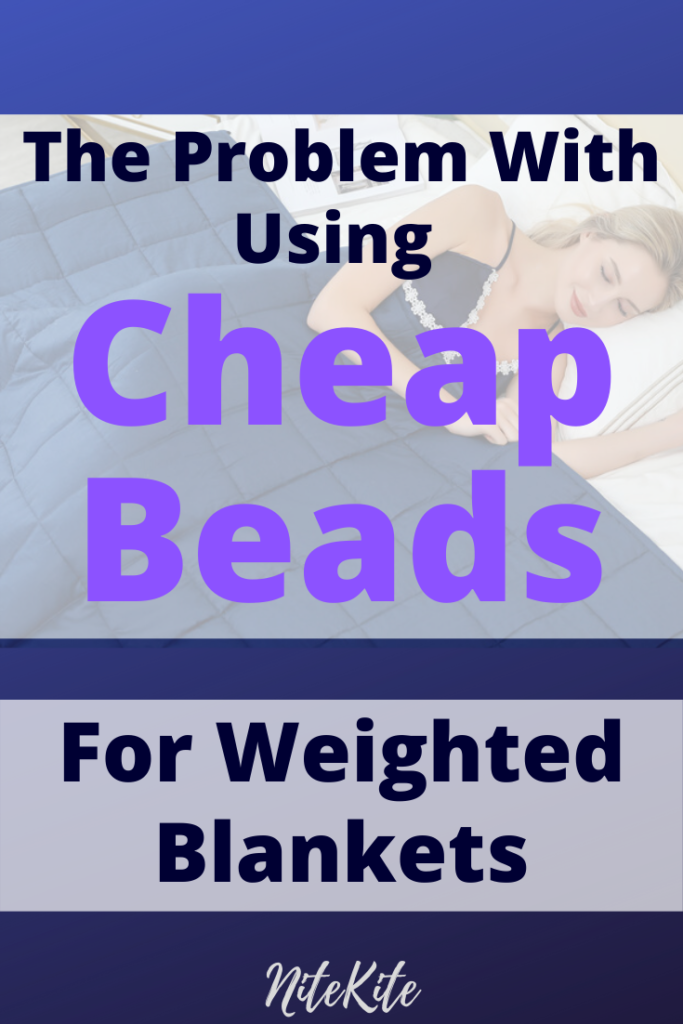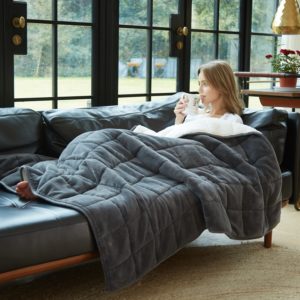
So you’ve been following the hype surrounding weighted blankets, reading the reviews and learning about them. You’ve heard about the benefits, and you’ve decided you want to try one and see for yourself. Now you need to figure out how to choose one.
The first things you may have wondered is what gives the blanket its weight, how does this affect the comfortability and what this may do to your sleeping experience.
Weighted blankets get the weight from a custom interior layer of pellets less than half a millimetre in diameter. These pellets should feel like sand inside the blanket; finely cut and smooth.
Plastic – polypropylene filling
Most weighted blankets on the market are filled with plastic poly pellets – poly being short for “polypropylene”. Polypropylene is basically the same as polyethylene, which is the most common plastic in the world. It is used in plastic films, packaging bottles and more.
They are a popular choice for manufacturers as plastic is mass produced and easy to acquire. This is also why many Chinese manufacturers sell weighted blankets with plastic poly on sites such as Amazon. Some people have hand-made their own blankets and used this as filling due to their availability.
Pros:
- The most common filling, easy to find.
- Cheap due to availability.
- Lasts for a good amount of time, as plastics such as these do not generally expire.
- As a Type-5 plastic it is non-toxic
Cons:
Depending on sensitivity to plastics, they may not be the most comfortable, or smooth. Again that depends on each person’s skin and how they feel about a plastic feel – even if protected by a cotton outer layer.
Some users suggest they can have a lumpy feel, and are prone to denting.
Unlike glass beads, they do not stand up to washing as well. They will not hold quality as long as glass bead filling.
Plastic so not environmentally friendly – although they will last long, disposal is complicated for this exact reason. Not the greenest choice to use in a blanket.
As a Type-5 plastic it is non-toxic, but still plastic.
Some users have complained of the plastic giving off a certain scent that becomes more apparent with use.
Glass beads

Glass beads are currently the high end option in terms of filling. They are still not as common, although due to increasing awareness, there are many products that claim to use glass beads though they’re filled with plastic or other transparent beads.
So what makes them “high end”? Well they are physically the smallest type beads on the market. The production process of glass allows it to be efficiently produced smaller than plastic polypropylene.
The effect of smaller smoother pellets is that they feel closer to sand in the blanket and give a softer feel due to more density and finer blend.
Pros:
- A high quality glass beaded blanket will have a very finely blended feel and will feel smother on the body, the NiteKite is built that way for the most comforting experience.
- Environmentally friendly – does not use plastic and also lasts a long time.
- Handles being washed multiple times, as glass does not denature as other filling types can.
Cons:
- Hardest to find – some people end up with a plastic one due to misleading information.
- Very likely be more expensive than other filling materials.
Grain/Dried food/stone fillings
This is not as common to purchase as the others, but it can be seen as the most environmentally friendly filling material. These materials are often used as the cheapest option – in some cases, totally free as they’re handmade at home because you can get the materials in many places.
Pros:
- Cheapest by far, potentially free.
- It will be easier to have a custom-looking and therefore more personalised blanket with this material, as the other two (plastic pellets and glass) are going to be harder to source for a single user.
Cons
These types of fillings are general organic material which can become problematic for a number of reasons.
They don’t last as long as either plastic pellets or glass beads, as they’re dried organic matter
If they’re handmade (or even not) the user must make sure the outer layer is washed alone, as washing food/organic matter in a washing machine will quickly reduce or even destroy the original quality of the product – in other words they’re simply not as easy to take care of.





